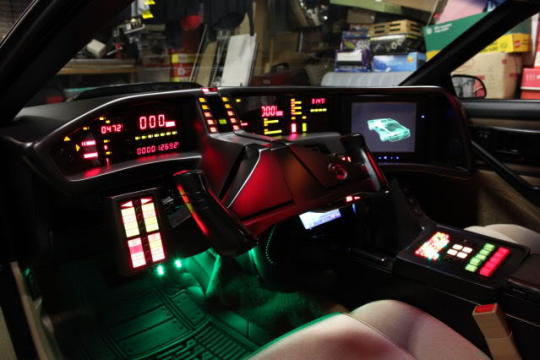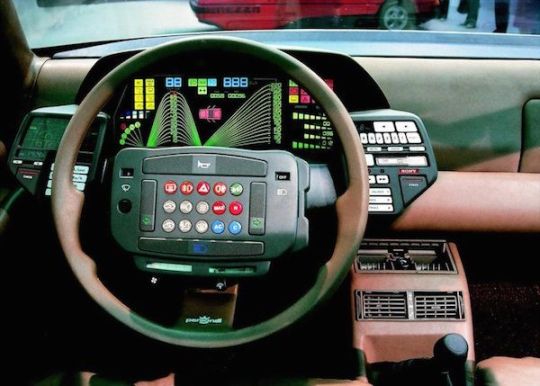#vehicle safety

Your parents had a car when you were growing up that stayed with you enough time to give you fond memories. Going to school, weekend groceries, trip to the lake, and then eventually that car eventually became your very first experience after getting the driving license. From there other beautiful memories of emancipation, freedom, and love, characterized your relationship with the four wheels.
That car belonged to your family for something like ten years, because it represented that kind of important purchase right after buying a house. From the financial point of view it always made sense into finding the right finance opportunity and get a good car. If you treated it well you would keep that car until its final days where it couldn’t move anymore.

The 80s gave a glimpse of the clustering today’s cars would be facing.
From the invention of the car, driving meant the physical extension of the human body and mind onto the road with a straightforward interaction. The simpler mechanical processes of the car allowed drivers to focus more on their ability to conduct the vehicle, technology was passive and was only introduced to avoid the arm of those inside.
However in the last ten years the realm of electronics drastically changed our relationship with the road. Cars have become much more expensive and loaded with features we don’t have time to use nor to get acquainted in order to take fully advantage of, and they have became more sophisticated systems to buy and to maintain. If yesterday you begun driving on a car that fully relied on gears and levers, today you are immersed into a realm of digital enchantment and electronics that are there to distract you from the road.

The Opel Astra dashboard is an example of bad layout that doesn’t aid the driver at all.
Every five or so years cars get implemented with the latest gadgets in terms of safety and entertainment, increasing the UX/UI workload for the driver to catch up. Dashboards and steering wheels become more and more clustered with extra features and buttons, the driver at the same time is asked to split his visual and body tasks more and more focusing away from what’s in front of him/her.
Buttons to press on the dash create a momentary distraction for the driver to prioritize. Even if it’s just a second or two it still removes the attention from the surrounding traffic. Using only the hand to activate the dash features without looking at them isn’t always easy because of they way buttons are designed, but also the position they take might interfere with the shifting stick or other obstacles.

The Lamborghini Urus dashboard is a Christmas tree on wheels.
Expensive cars tend to have the most of features and UI increasing the UX workload for the driver and passengers, resulting in more distractions while driving; also expensive cars tend to be those with the highest horsepower and speed, thus increasing the risk factor furthermore.
Car makers don’t always keep in mind best practices in terms of interior design and tend to patch their mistakes adding expensive safety features. Collision avoidance, radar, breaking assistance, biometric evaluation, are part of extra packages that spike up your final estimate when you go visit the dealership for a quote.
Some might ask if you are putting a price on the safety of your family and yours, but the gimmick is old and redundant. But the issue is not difficult at all to fix. What is needed is a simple layout of the UI in order to simplify the UX of the driver and passengers, reducinig critical tasks to the minimum of danger and distraction.

Audi A4 dash presents 7 focus points the driver has to pay attention before fully getting used to. In the past 2 to 3 focus points were the standard.
There’s no need to design all the dash buttons the same shape and colour, nor to place them too close where the hand cannot naturally interact with them (aka too close to the shift lever). The distance the eyes have to travel also poses a significant element of distraction pattern: the more the focus points on the dash the more the eye has to constantly jump from one to the other and away from the traffic ahead.

Tesla model 3 has a clean dashboard with only one focus point, removing unwanted distractions from the eyes.
How much technology is enough and is it really needed?- Modern cars are removing the experience away from the driver and placing it in the hands of on-board technology. This process has disconnected the individual from fully understanding how the physics of driving work, and the obligations involved being on the road. Drivers and passengers will continue to trust the car’s technology to the point they will surrender even their legal responsibilities in case of any accident.
This has already happened with self-driving technology with some intoxicated Tesla owners blaming the car for creating an accident, or Uber’s vehicle collision radar not working when in March 2018 a pedestrian was struck and killed in Arizona. So here we have an issue of balancing the driving experience so we can still enjoy the tech featured in side a vehicle, without removing our duty towards driving according to the laws and common sense.
